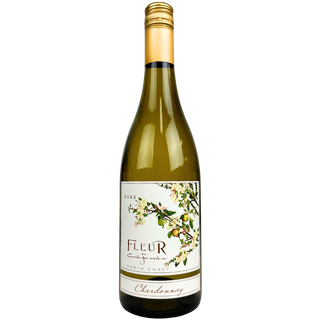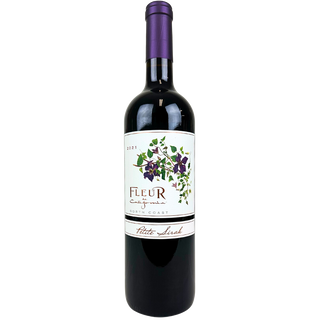In the world of wine, ratings play a significant role in guiding consumers towards their next bottle. Whether it's a prestigious 100-point scale or a simple star system, these ratings can often influence purchasing decisions and shape perceptions of a wine's quality. But what exactly do these ratings signify, and why do they hold such significance for both seasoned oenophiles and casual wine enthusiasts alike? Let's uncork the bottle and dive into the significance of wine ratings and accolades.

The Significance of Wine Ratings
At its core, the significance of wine ratings lies in their ability to guide the discerning palate of consumers. In a market saturated with an endless array of varietals, vintages, and appellations, ratings offer a compass, pointing towards wines that have been deemed exceptional in quality, character, and craftsmanship.
For the novice wine enthusiast navigating the aisles of a wine shop, a high rating can serve as a reassuring endorsement, providing confidence in their selection and enhancing their overall enjoyment of the wine-drinking experience. Meanwhile, seasoned connoisseurs may use ratings to explore new terroirs, discover emerging winemakers, or simply validate their own discerning tastes.
They are typically assigned by wine critics, publications, or competitions, who evaluate various aspects of the wine, including aroma, flavor, structure, and overall balance. These ratings are often accompanied by tasting notes, offering further insight into the wine's characteristics.
For winemakers, high ratings can translate into increased sales, prestige, and recognition within the industry. Conversely, low ratings may prompt producers to reevaluate their winemaking practices or marketing strategies to improve future offerings. However, it's essential to recognize that wine ratings are subjective and can vary depending on the preferences and expertise of the evaluator.
Understanding Wine Rating Systems
Wine rating systems come in various forms, but one of the most widely recognized is the 100-point scale popularized by wine critic Robert Parker. In this system, wines are typically scored on a scale from 50 to 100, with higher scores indicating superior quality. Here's a general breakdown of how wines are typically rated:
- 95-100 (Double Gold): Outstanding, exceptional wine with profound complexity and character.
- 90-94 (Gold): Excellent wine with superior qualities and notable characteristics.
- 85-89 (Silver): Very good wine with solid structure and enjoyable flavors.
- 80-84 (Bronze): Good wine with average qualities and satisfactory characteristics.
- Below 80: Below average wine with noticeable flaws or shortcomings.
In addition to numerical ratings, some critics may use a star or letter-grade system to evaluate wines, providing a simpler means of assessment for consumers.
The medal system usually follows the 100-point scale system (as shown above) and also usually includes a Best of Class rating to show which wine was the top wine in it's category. The Best of Class label can receive any medal (Double Gold, Gold, etc.) it will just be the highest rated wine in it's category. This medal system is mostly reserved for wine competitions instead of regular tastings, but is also a great way to see how the wines compare to others on the market.
Factors Influencing Wine Ratings
Several factors can influence wine ratings, including:
- Quality of the Wine: The most critical factor is the inherent quality of the wine itself, including its flavor profile, complexity, balance, and overall appeal.
- Tasting Environment: The setting in which the wine is tasted can impact perception, with factors such as lighting, temperature, and glassware playing a role in the evaluation process.
- Reviewer Bias: Critics may have personal preferences or biases towards certain styles of wine, regions, or producers, which can influence their ratings.
- Price Point: There is a perception that higher-priced wines should inherently receive higher ratings. While price can be indicative of quality, it should not be the sole determinant of a wine's rating.
- Consistency: Critics strive for consistency in their evaluations, but individual palates and preferences may evolve over time, leading to variations in ratings.
In an era inundated with marketing hype and superficial endorsements, wine ratings offer a beacon of authenticity and credibility. Unlike flashy advertising campaigns or celebrity endorsements, ratings are grounded in the unbiased assessments of seasoned critics, sommeliers, and industry professionals who possess a deep understanding of wine's nuances and complexities.
As such, high ratings serve as seals of approval, instilling trust and confidence in consumers who seek assurance that they are investing their palates and pocketbooks in wines of exceptional quality. This trust is the bedrock of enduring relationships between producers, retailers, and consumers, fostering a symbiotic ecosystem built on a foundation of mutual respect and integrity.
Embracing Subjectivity and Diversity
However, it's essential to recognize that wine ratings are not without their nuances and subjectivities. Just as no two palates are alike, no two critics will perceive a wine in precisely the same way. What one critic may praise for its boldness and complexity, another may critique for its subtlety and finesse.
In embracing this inherent subjectivity, we celebrate the diversity of tastes, styles, and expressions that make the world of wine so endlessly fascinating. Rather than seeking consensus or uniformity, wine ratings invite us to embrace the richness of individual perspectives, fostering a culture of exploration, appreciation, and discovery.

Conclusion
The significance of wine ratings transcends mere numbers on a scale; it represents a profound celebration of craftsmanship, authenticity, and the timeless pursuit of excellence. Whether guiding the palates of novices, setting benchmarks for quality, cultivating trust and confidence, or embracing diversity and subjectivity, wine ratings serve as invaluable tools in our ongoing quest for vinous enlightenment.
So, the next time you raise a glass to toast the fruits of the vine, take a moment to appreciate the significance of wine ratings and the myriad ways in which they enrich our collective journey through the world of wine. Here's to the pursuit of excellence, the joy of discovery, and the endless pleasures that await in every bottle uncorked. Cheers!








